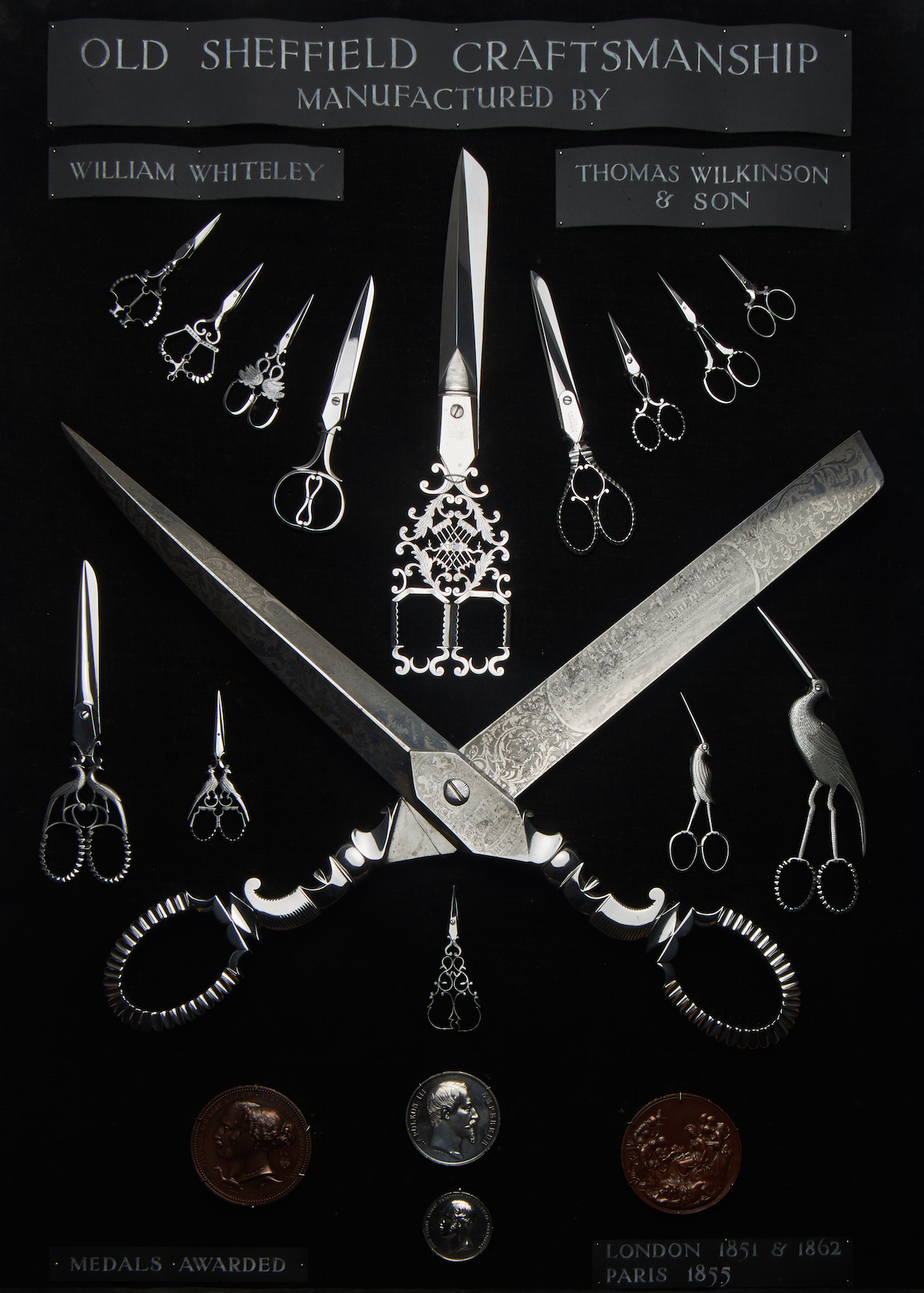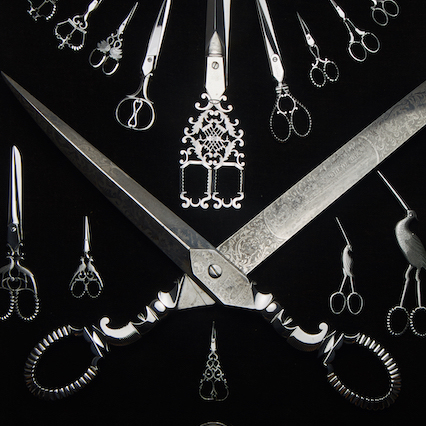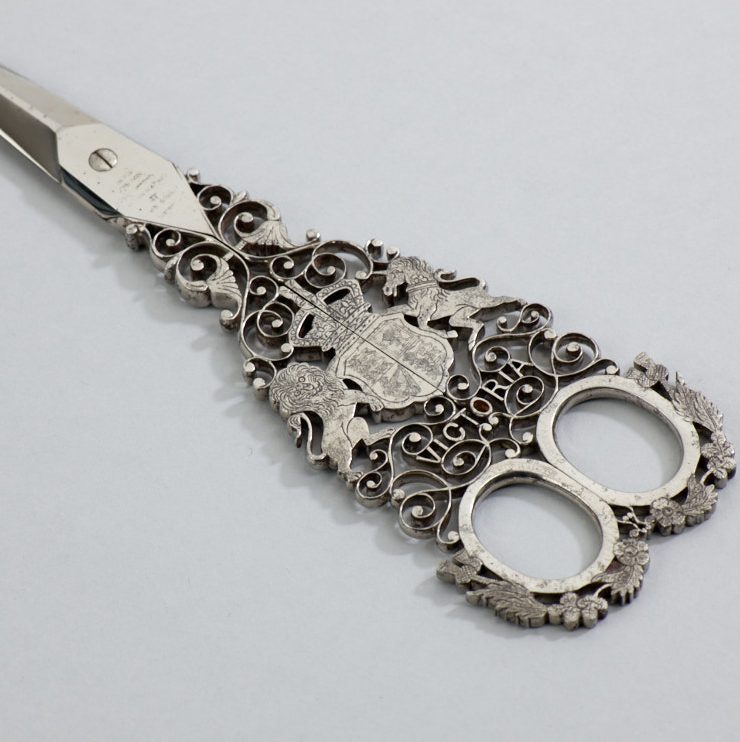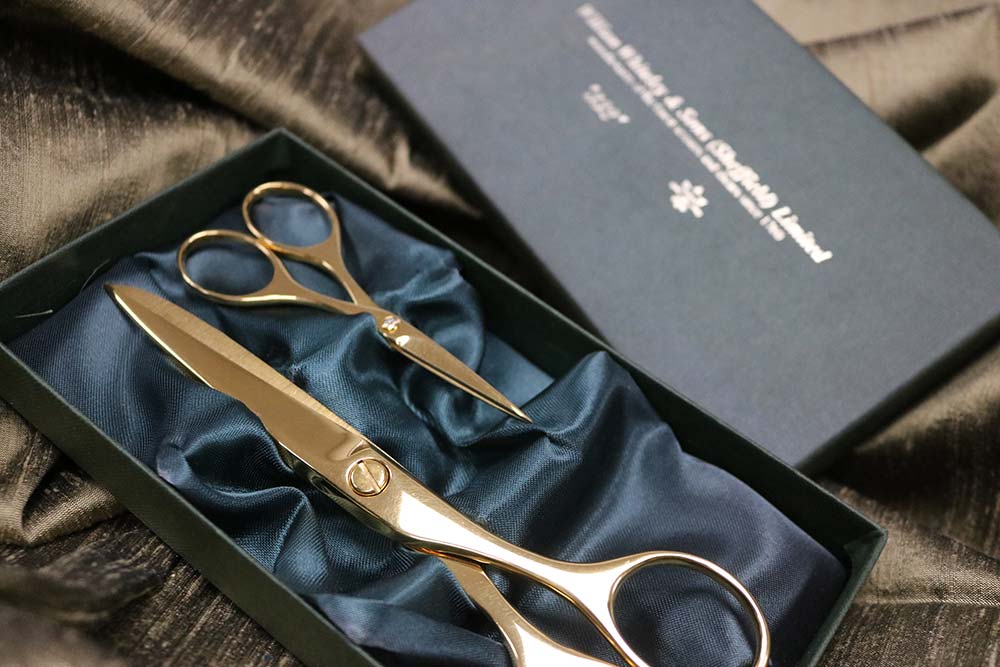Women in Charge: The 19th Century
The 1800s: a period of industrial, cultural, political, scientific, and military change within the United Kingdom. From the beginning of Queen Victoria’s reign in 1837, to her death in 1901, it was an extraordinary time for our country and commonly known as the Victorian era. Her reign of 63 years and seven months was longer than that of any of her predecessors too!
Thomas Wilkinson was delighted to commemorate the new Queen, so in 1838 his firm made and presented Queen Victoria with a pair of beautiful, elaborately produced scissors; with 67 files recorded as being used in their manufacture.

Entirely hand-made from a single piece of crucible steel; if any tiny part had snapped off, the horrified maker would have had to have started again from scratch!
Two pairs were made, one of which had coloured enamels on the royal coat of arms. One was presented to Queen Victoria and one was lent to the Sheffield Museum in the 1870s; I saw the hand written entry in their ledger of the time. However, when I went to retrieve them about 15 years ago, they were lost – and some weeks later the curator noticed a Philips & Drew Auction catalogue in which they were featured!
It turned out that the council had lent them to a steel company to display in their foyer, which subsequently went bust and the receivers were about to sell the scissors… so we managed to retrieve them in the nick of time.
A decade later in 1849, my great-great-great grandfather died with no sons. In a remarkable display of courage and enterprise for the time, his widow Elizabeth Whiteley took over the firm, which she ran successfully for 20 years. She smoked a clay pipe, wore clogs, and travelled a lot around Ireland to build a good market for scissors there. I wish I could have known her as one female scissor maker to another! Sadly, there are no pictures of her that we can find.

This display case sits in my office – I never get tired of looking at it.
During her tenure, Whiteley’s achieved remarkable things. We made scissors for the Great Exhibition of 1851, which was organised by Prince Albert to bring together all great products from Britain and the Empire, at the specially built Crystal Palace in Hyde Park (it burnt down in 1936). Some of the scissors in the exhibition case in our office are marked “E. Whiteley”. Some years later, in 1879, Whiteley’s bought Thomas Wilkinson & Son, who also exhibited and won medals at the Great Exhibition.
Thomas Wilkinson also won awards at the 1855 Exposition Universelle in Paris, and the International Exhibition of 1862 – on the site of the current Natural History Museum in London.



